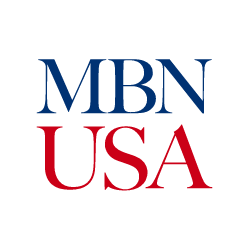Chris James, president and CEO of The National Center for American Indian Enterprise Development
Volume 4, 2020
National Center is the longest-running Native American economic development organization. Its annual conference – Reservation Economic Summit (RES) – is the largest economic development gathering in Indian Country.
Native Americans have often been overlooked when it comes to supplier diversity. But in recent years, they had started to make progress — until COVID-19 came along and dealt a stunning blow.
We recently talked to Chris James, president and CEO of The National Center for American Indian Enterprise Development, about the status of Native Americans in the supply chain, impact COVID-19 is having on Indian Country, opportunities ahead and more.
Q: How would you describe the landscape of Native Americans in the supply chain in the United States?
A: There has been significant improvement in recent years, but there is still a lot of room to grow. This is one of the most important issues for The National Center for American Indian Enterprise Development — increasing the Native American supply chain from small companies to some of the largest in the world, as well as the federal government. At every Reservation Economic Summit (res.ncaied.org), we host procurement matchmaking events to connect suppliers with companies in need of them. Our Procurement Technical Assistance Center works year-round to prepare Native-owned businesses to compete — and win — contracts. And our virtual Native Edge Institutes (www.nativeedge.com/native-edge-institutes) provide training and the latest updates on everything a business would need to know to enter the supply chain.
Q: What has been the growth trajectory of Indian Country over the past decade?
A: The most recent census data is from 2012, so we will have a better idea of the current trajectory after the current census concludes. What I’ve noticed — at least anecdotally, both at the National Center and before that at the U.S. Small Business Administration — is the growing diversification within the Native economy. We are far from just gaming, though it remains a critical economic development peg for many tribes. But tribes and Native entrepreneurs are active in fields from e-commerce to agriculture and everything in between. Tribes are coming to understand that their economic futures cannot be tied to any one sector or business. And, our community is benefiting from their vision and leadership.
Q: How has COVID-19 impacted Native American businesses?
A: Like most businesses, Native American and Alaska Native ventures have been hit extremely hard by the pandemic. We knew that many tribes would be vulnerable, given the importance of tourism and gaming. But the damage extends much farther.
We recently partnered with the Center for Indian Country Development at the Federal Reserve Bank of Minneapolis to conduct a survey (see related article "Sage Business Advisors helps tribes diversify their portfolios") about how COVID-19 is affecting tribally and Native-owned businesses. Over 400 responded, representing over 20 sectors and nearly every corner of the country. We found that over two-thirds of these businesses have experienced revenue loss, and 41% have furloughed or laid-off employees. Only 22% received a Paycheck Protection Program loan created by the federal Coronavirus Aid, Relief and Economic Security or CARES Act. Nearly half of respondents don’t expect things to return to normal for at least six months. This data indicates a clear need for additional assistance as businesses struggle during the pandemic.
Q: How has NCAIED helped Native American-owned businesses overcome challenges presented by COVID-19?
A: Over the past two years, the National Center has conducted more than 30 Native Edge Institutes across the country, with over 2,500 total attendance. Each participant receives hands-on training in federal and corporate small business programs, access to capital, leadership development and economic development training. Each NEI also provides valuable insights in government contracting and local partners service programs. Attendees receive one-on-one consulting and follow-up support after each event.
These events were originally in person, but due to COVID-19, they have shifted primarily to virtual events. They are often focused on the resources available to businesses struggling due to the pandemic. These events have been incredibly valuable tools for participants and ways for the National Center to provide our services and expertise year-round. I encourage anyone interested to check out some of the archived webcasts of these events at www.nativeedge.com/native-edge-institutes.
Q: What do you see as the biggest challenges facing Native American business owners, and how has NCAIED worked to help them address those challenges?
A: All businesses impacted by COVID-19 must think or rethink how they do business. Many businesses are closing their doors due to uncertainty about what the future holds. Some businesses are struggling with cash flow, and that makes their ability to access additional capital critical for survival. For Indian countries, access to capital has always been difficult and a unique challenge. It has only grown because of COVID-19.
Small businesses need to continue to look for resources, including entering new markets and sectors. There are several Native American- or tribally owned businesses that have shifted to producing personal protective equipment during the pandemic. Such a change not only helps them stay in business, but it provides critical equipment needed to combat the virus — both for tribes and people across the United States.
Q: What do you see as the greatest opportunities for Native American businesses?
A: Native Americans and Alaska Natives should examine how the new reality of working from home can be an advantage for them. For instance, many Native entrepreneurs were already adept at using social media to sell their products and increase brand awareness. Those who know how to effectively utilize these tools are set up better than most to weather the storm. Companies that are nimble and resourceful are better able to conduct their work remotely, using Zoom or other video conferencing technology.
It’s a cliché to say that every crisis presents opportunities, but in the case of COVID-19, we see businesses in certain sectors — technology, home improvement, cleaning and disinfectant supplies, medical supplies, etc. — are doing well. Native businesses need to assess where they might be able to break into an underserved and needed a new market.
Q: In light of recent protests surrounding issues of social injustice and racism, there is a growing sense of the importance of diversity both in corporate America and in the general public. How does that impact the Native American business community?
A: I think it is true that there is a growing awareness of the need for diversity in corporate America, and this extends to all minority communities. It has been heartening to see all of our communities embrace the message of Black Lives Matter and recognize that the cause includes justice and equality for peoples that have been traditionally underserved. The Washington National Football League team did not change its name because only Native Americans protested it; there were many voices calling for change that, ultimately, led to positive action. We would not have passed legislation that addresses the tragedy of missing and murdered Indigenous women without the support of a broad coalition of Americans.
We have long called for fair representation in supply chains, particularly with federal and other government entities. But ensuring supply chain diversity in the private sector is just as important, if not more. Fortunately, we are blessed with some terrific corporate partners that value diversity. But we will always welcome additional support and collaboration from corporate America.
Q: How long do you think it will take Indian Country to return to "normal” relative to last year?
A: I don’t think there is a "normal” after COVID-19. I think we will all need to adjust to a new reality, which will include much more telework and remote meetings, etc. But Indian Country is resilient and will not just recover from the pandemic; it will emerge stronger from it.
Q: What does the future hold for Native American businesses in the U.S.?
A: We should know a lot more over the next few months, as we get a better sense of how long COVID-19 will be a reality in our lives. But my hope is we don’t lose sight of the progress we’ve made in recent years to grow the Native economy and expand it into new fields.
RES 2020 took place just before many cities and states enacted social distancing and public health measures to combat the virus. But in those last few days of our pre-pandemic life, there was tremendous optimism about where we are headed as Native businesses and entrepreneurs. I am confident that these same businesses will be resilient and find ways to still reach their goals moving forward.
For more information about NCAIED, visit www.ncaied.org.
Reservation Economic Summit
What: RES 2021 Featuring 2 Ways to Attend: Live In-Person or Live Virtual
When: July 2021
Where: Las Vegas, Nevada
To view or download the full article, please click here.
Volume 4, 2020
National Center is the longest-running Native American economic development organization. Its annual conference – Reservation Economic Summit (RES) – is the largest economic development gathering in Indian Country.
Native Americans have often been overlooked when it comes to supplier diversity. But in recent years, they had started to make progress — until COVID-19 came along and dealt a stunning blow.
We recently talked to Chris James, president and CEO of The National Center for American Indian Enterprise Development, about the status of Native Americans in the supply chain, impact COVID-19 is having on Indian Country, opportunities ahead and more.
Q: How would you describe the landscape of Native Americans in the supply chain in the United States?
A: There has been significant improvement in recent years, but there is still a lot of room to grow. This is one of the most important issues for The National Center for American Indian Enterprise Development — increasing the Native American supply chain from small companies to some of the largest in the world, as well as the federal government. At every Reservation Economic Summit (res.ncaied.org), we host procurement matchmaking events to connect suppliers with companies in need of them. Our Procurement Technical Assistance Center works year-round to prepare Native-owned businesses to compete — and win — contracts. And our virtual Native Edge Institutes (www.nativeedge.com/native-edge-institutes) provide training and the latest updates on everything a business would need to know to enter the supply chain.
Q: What has been the growth trajectory of Indian Country over the past decade?
A: The most recent census data is from 2012, so we will have a better idea of the current trajectory after the current census concludes. What I’ve noticed — at least anecdotally, both at the National Center and before that at the U.S. Small Business Administration — is the growing diversification within the Native economy. We are far from just gaming, though it remains a critical economic development peg for many tribes. But tribes and Native entrepreneurs are active in fields from e-commerce to agriculture and everything in between. Tribes are coming to understand that their economic futures cannot be tied to any one sector or business. And, our community is benefiting from their vision and leadership.
Q: How has COVID-19 impacted Native American businesses?
A: Like most businesses, Native American and Alaska Native ventures have been hit extremely hard by the pandemic. We knew that many tribes would be vulnerable, given the importance of tourism and gaming. But the damage extends much farther.
We recently partnered with the Center for Indian Country Development at the Federal Reserve Bank of Minneapolis to conduct a survey (see related article "Sage Business Advisors helps tribes diversify their portfolios") about how COVID-19 is affecting tribally and Native-owned businesses. Over 400 responded, representing over 20 sectors and nearly every corner of the country. We found that over two-thirds of these businesses have experienced revenue loss, and 41% have furloughed or laid-off employees. Only 22% received a Paycheck Protection Program loan created by the federal Coronavirus Aid, Relief and Economic Security or CARES Act. Nearly half of respondents don’t expect things to return to normal for at least six months. This data indicates a clear need for additional assistance as businesses struggle during the pandemic.
Q: How has NCAIED helped Native American-owned businesses overcome challenges presented by COVID-19?
A: Over the past two years, the National Center has conducted more than 30 Native Edge Institutes across the country, with over 2,500 total attendance. Each participant receives hands-on training in federal and corporate small business programs, access to capital, leadership development and economic development training. Each NEI also provides valuable insights in government contracting and local partners service programs. Attendees receive one-on-one consulting and follow-up support after each event.
These events were originally in person, but due to COVID-19, they have shifted primarily to virtual events. They are often focused on the resources available to businesses struggling due to the pandemic. These events have been incredibly valuable tools for participants and ways for the National Center to provide our services and expertise year-round. I encourage anyone interested to check out some of the archived webcasts of these events at www.nativeedge.com/native-edge-institutes.
Q: What do you see as the biggest challenges facing Native American business owners, and how has NCAIED worked to help them address those challenges?
A: All businesses impacted by COVID-19 must think or rethink how they do business. Many businesses are closing their doors due to uncertainty about what the future holds. Some businesses are struggling with cash flow, and that makes their ability to access additional capital critical for survival. For Indian countries, access to capital has always been difficult and a unique challenge. It has only grown because of COVID-19.
Small businesses need to continue to look for resources, including entering new markets and sectors. There are several Native American- or tribally owned businesses that have shifted to producing personal protective equipment during the pandemic. Such a change not only helps them stay in business, but it provides critical equipment needed to combat the virus — both for tribes and people across the United States.
Q: What do you see as the greatest opportunities for Native American businesses?
A: Native Americans and Alaska Natives should examine how the new reality of working from home can be an advantage for them. For instance, many Native entrepreneurs were already adept at using social media to sell their products and increase brand awareness. Those who know how to effectively utilize these tools are set up better than most to weather the storm. Companies that are nimble and resourceful are better able to conduct their work remotely, using Zoom or other video conferencing technology.
It’s a cliché to say that every crisis presents opportunities, but in the case of COVID-19, we see businesses in certain sectors — technology, home improvement, cleaning and disinfectant supplies, medical supplies, etc. — are doing well. Native businesses need to assess where they might be able to break into an underserved and needed a new market.
Q: In light of recent protests surrounding issues of social injustice and racism, there is a growing sense of the importance of diversity both in corporate America and in the general public. How does that impact the Native American business community?
A: I think it is true that there is a growing awareness of the need for diversity in corporate America, and this extends to all minority communities. It has been heartening to see all of our communities embrace the message of Black Lives Matter and recognize that the cause includes justice and equality for peoples that have been traditionally underserved. The Washington National Football League team did not change its name because only Native Americans protested it; there were many voices calling for change that, ultimately, led to positive action. We would not have passed legislation that addresses the tragedy of missing and murdered Indigenous women without the support of a broad coalition of Americans.
We have long called for fair representation in supply chains, particularly with federal and other government entities. But ensuring supply chain diversity in the private sector is just as important, if not more. Fortunately, we are blessed with some terrific corporate partners that value diversity. But we will always welcome additional support and collaboration from corporate America.
Q: How long do you think it will take Indian Country to return to "normal” relative to last year?
A: I don’t think there is a "normal” after COVID-19. I think we will all need to adjust to a new reality, which will include much more telework and remote meetings, etc. But Indian Country is resilient and will not just recover from the pandemic; it will emerge stronger from it.
Q: What does the future hold for Native American businesses in the U.S.?
A: We should know a lot more over the next few months, as we get a better sense of how long COVID-19 will be a reality in our lives. But my hope is we don’t lose sight of the progress we’ve made in recent years to grow the Native economy and expand it into new fields.
RES 2020 took place just before many cities and states enacted social distancing and public health measures to combat the virus. But in those last few days of our pre-pandemic life, there was tremendous optimism about where we are headed as Native businesses and entrepreneurs. I am confident that these same businesses will be resilient and find ways to still reach their goals moving forward.
For more information about NCAIED, visit www.ncaied.org.
Reservation Economic Summit
What: RES 2021 Featuring 2 Ways to Attend: Live In-Person or Live Virtual
When: July 2021
Where: Las Vegas, Nevada
To view or download the full article, please click here.
Please Login to Comment


.jpg)

.jpg)




